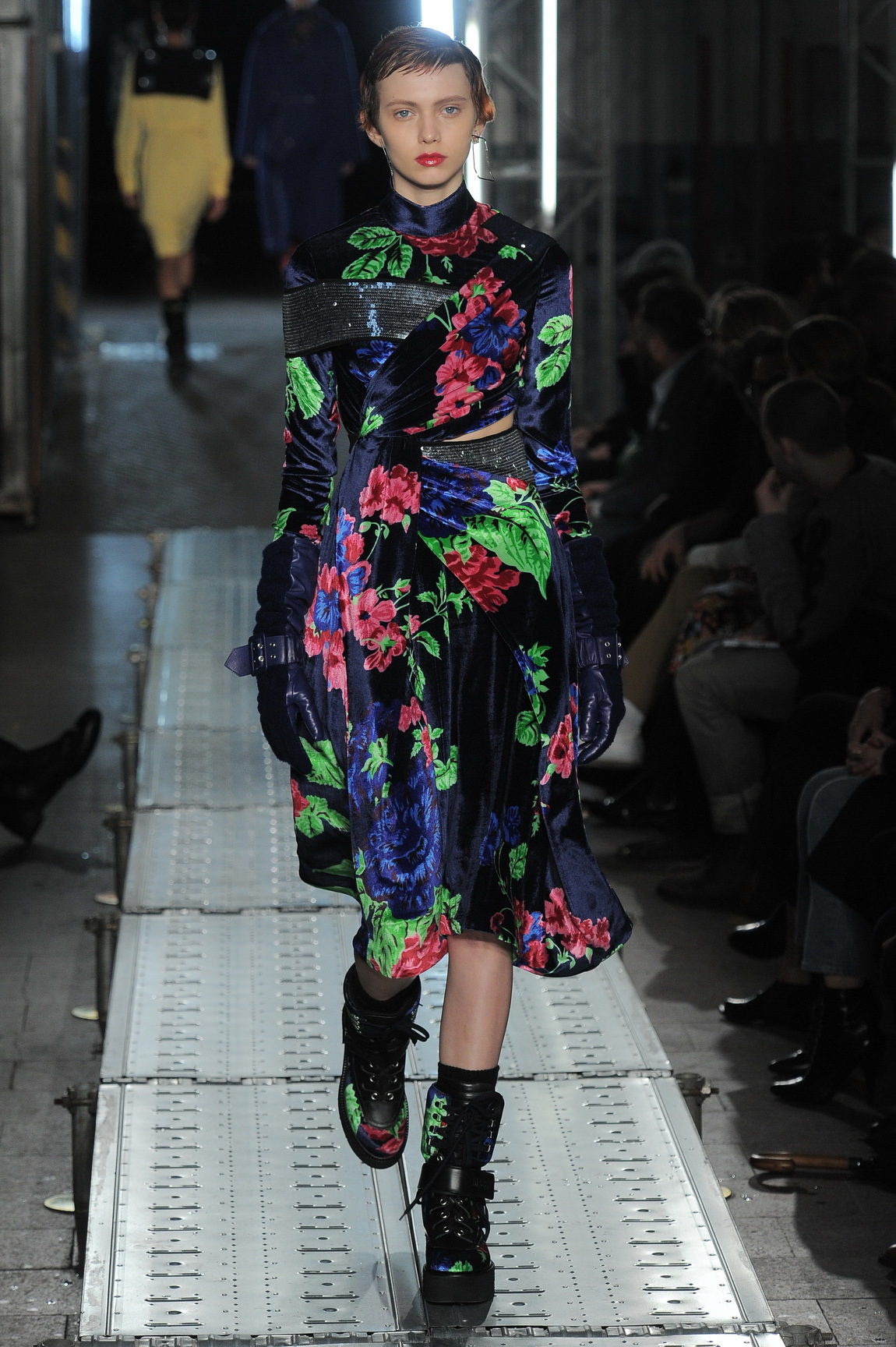As the lights fade on the fall/winter 16 shows in Milan, one message comes through loud and clear: consistency. Following fashion’s annus horribilis of 2015, when the musical-chair-like shifting of designers was taken to new extremes and the antiquated fashion system was debated to no end, the brands of Milan — traditionally seen as a place of big business — had to put on a strong front to show that they’re paying attention to an industry in transition.
That balance was reflected in Sunday’s three main shows, which all belong to very different poles in the industry: Missoni, the old-school fashion dynasty that’s still run by its founding family; Marni, the modern powerhouse founded in the 90s; and MSGM, the young and successful new-era brand. The year 2015 and the changes it generated at the beginning of this year, when both Vetements and Burberry announced their respective restructurings of the fashion-show and sales models, were most directly reflected in the MSGM show — as it should be for a young label — where the invitation came with a ban on pictures and social media, and the press release proclaimed the collection would be theme-less and “just clothes.”

While that statement followed the idea embodied by Vetements — which of course is French for just “clothes” — of assembling collections of great pieces people want to buy and wear instead of forcing a big concept, the social-media ban was a more direct reaction to fashion’s current debate on immediacy and accessibility, not just in terms of how quickly a broader fashion audience gets to see a collection, but also just when and how it should be made available to them. (Vetements, for instance, will now be doing one collection per season and will produce and sell it prior to the show, which will take place at the men’s fashion week. Burberry, on the other hand, is fast-forwarding the season plan, and will now be selling their collections directly after they show them.)
At MSGM, the message was a no-nonsense call to simplify fashion, but also to take it slow and allow for collections and the trends they create to breathe. That’s one way of creating consistency. Another is the Missoni method, which echoed the sentiments we’ve seen at similar houses such as Gucci and Versace this week: continuity, by way of slowing down the rush to constantly fulfill the media’s expectations of reinvention.

Angela Missoni’s collection was strong — in fact, stronger than it’s been for some time — but it was still Missoni through and through, with all the fancy knitwear techniques and zigzags that entails. If it ain’t broke, don’t fix it — and that sentiment rings true not only for the Missoni family, who have stuck to their knitted guns for decades, but also for a designer such as Alessandro Michele, who has only just begun to build his creative universe at Gucci and should be allowed to develop that slowly and surely, not least so the costumer might have a chance to catch on (and catch up!).

Consuelo Castiglioni belongs to the segment of designers for whom conceptual reinvention is key. Marni wasn’t built on one specific technique or object like Missoni (knitwear) and Gucci (accessories), and so it needs to surprise and delight its fans every season without alienating them. In Sunday’s show, Castiglioni displayed just that sense of consistency in a collection that had all the graphic street-style-esque embellishment Marni fans swoon for, but challenged the silhouette in bold shapes and proportions. In a Milan that’s going through changes, consistency is the ironic factor that will keep it together.

Credits
Text Anders Christian Madsen
Photography Mitchell Sams
